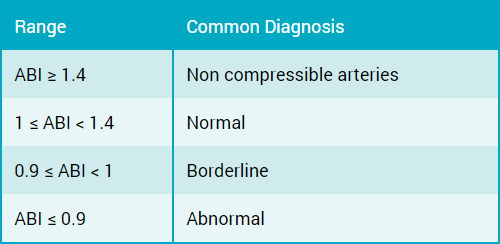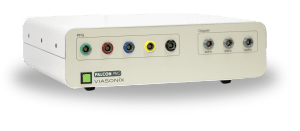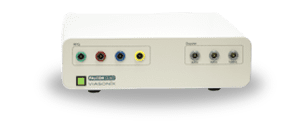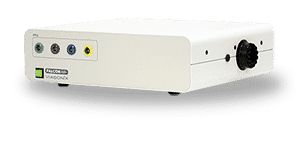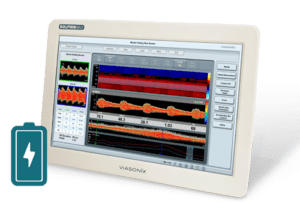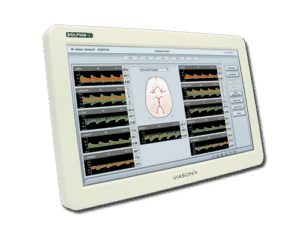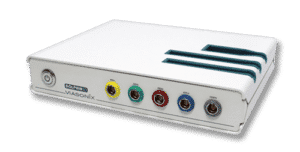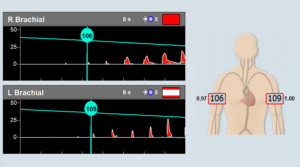In this session, we will try to discuss frequently asked questions about the Ankle Brachial Index test (ABI). ABI is a standard test performed as part of the physiologic evaluation of patients with a suspected peripheral vascular disorder.
What is ABI?
ABI stands for Ankle Brachial Index. The ABI index is defined as the ratio between the systolic blood pressure at the level of the ankle to the higher systolic blood pressure measured in the right/left Brachials.
ABI is a standard and common physiologic test designed to determine if there is an arterial obstruction to blood flow in the legs of the patient. The test is fast, non-invasive, painless, and reliable.
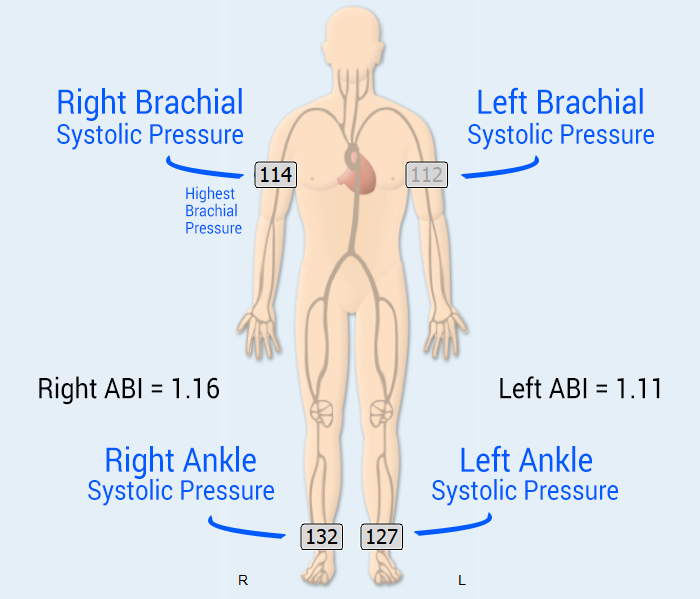
How to do an ABI Test?
The standard method of measuring ABI is by placing a blood pressure cuff on each of the right and left Ankles and on each of the right and left Brachials. This is done while the patient is in the supine position.
Once the preparation is completed, the technician uses a pen Doppler probe to find a blood flow signal after the location of the pressure cuff.
In the Ankles, either the Dorsalis Pedis or the Posterior Tibial arteries are measured. In the arms, either the Radial, Ulnar, or Brachial arteries are measured.
Once a stable Doppler blood flow signal is found, the corresponding pressure cuff is inflated until the signal disappears. The signal disappearance indicates that the region of the cuff is occluded and that blood flow is stopped. At this point, the pressure in the cuff is released in a controlled manner until the Doppler signal re-appears. The pressure at which the Doppler blood flow reappeared indicates the systolic blood pressure.
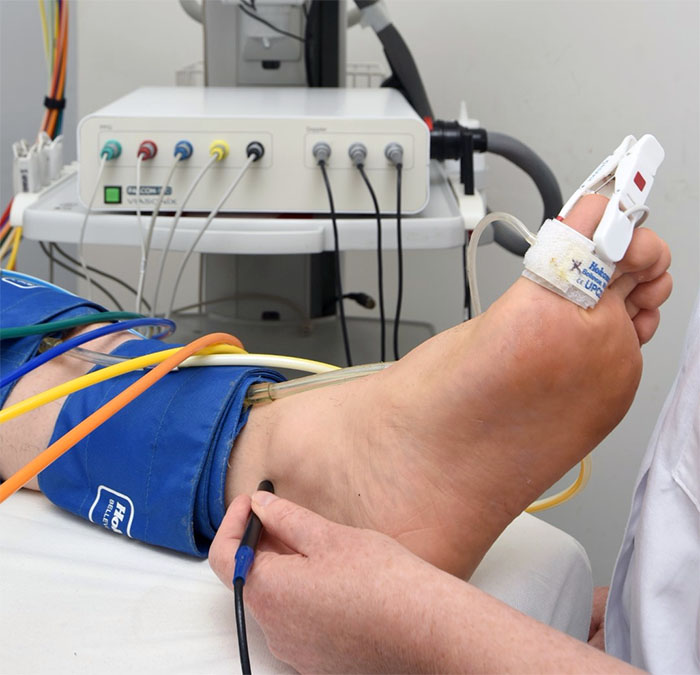
What is Measured During an ABI Test?
The Ankle Brachial Index involves measuring the systolic blood pressure in the ankles and the Brachials.
The best ABI machines provide an automatic display of the suspected location of the systolic blood pressure. In addition, with high-end ABI equipment, the pressure indices are immediately calculated and displayed, as well as the automatic calculation of the ABI index itself.
Are ABI Measurements Important?
ABI measurements are critical in evaluating the vascular physiological significance of a lower limb pathology. These measurements are fast and simple and provide reliable screening of patients with vascular pathology or disorder in the lower limb circulation.
If the Ankle Brachial Index turns out to be abnormal, a follow-up examination with ultrasound imaging diagnosis is often performed. However, if the ABI measurement turns out to be normal, there is no need to perform an ultrasound examination. This screening saves significant time and money to the vascular laboratory or department. It also focuses the attention of the medical staff on alternative clinical factors which could cause the suspected pathology.
Is the ABI Examination Painful?
ABI measurements are non-invasive and, in general, do not cause any pain to the patients. The pressure cuffs are wrapped around the ankles and upper arms and inflated to pressure just over the systolic pressure.
This high pressure may cause an uneasy feeling for some patients. However, since the cuffs are immediately deflated, the patient’s discomfort is very short in duration.
The application of Doppler or PPG sensors is completely painless.
How Long does an ABI Measurement Take?
ABI measurements are generally very short in time and can be completed in just a few minutes.
The patient preparation usually is the longest part of the examination. The ABI patient is asked to lay down, and typically four pressure cuffs are wrapped around the Ankles and Brachials. These pressure cuffs are then connected to the tubing of the ABI machine.
Once the cuffs are prepared, the Doppler probe is used to identify the distal blood flow waveform according to the site of interest. Then, the pumps start to inflate the pressure cuff rapidly. Once the systolic pressure is exceeded, and the Doppler signal flattens out, the cuff deflation process starts.
As a side note, the Falcon ABI machine is the only machine that allows controlling the rate of deflation, between 2 and 6 mmHg per second.
How to Interpret ABI Measurements?
Only physicians should interpret the results of an Ankle Brachial Index measurement.
The value of interest is the ABI itself. A low value of ABI is obtained when the systolic pressure in the ankle is significantly lower than the systolic pressure in the arm.
In that case, a vascular pathology is suspected because there seems to be a pressure drop across an obstruction to the flow somewhere along the arteries of the leg. A typical form of such obstruction to flow can be arterial stenosis. The blood pressure drops as it passes a vascular obstruction, and the drop is a function of the velocity of the blood flow.
A high ABI value sometimes is obtained when the vessels are more rigid and difficult to compress. This is often found with diabetic patients that have stiffer blood vessels.
What is a Normal ABI Index Result?
The criteria for normal ABI values may slightly differ from institute to institute.
According to many international societies and guidelines, ABI measurement between 0.9 to 1.4 is considered normal or acceptable.
A higher ABI value suggests that the vessels are incompressible, and often the measurement of TBI (Toe Brachial Index) is performed in addition to the standard ABI test. Low ABI values are suggestive of Peripheral Arterial Disease (PAD).
The clinical picture of a low ABI value can range from intermittent claudication to a complete lack of blood flow to the foot or lower part of the limb.
